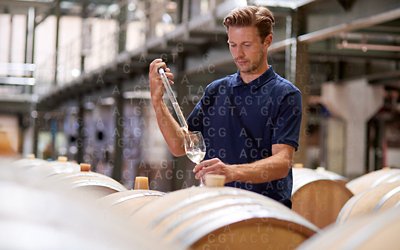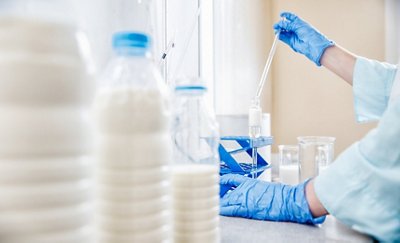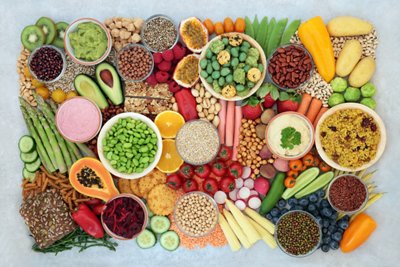How modern technologies can support ancient traditions in winemaking?
By the bioMérieux Editors | Reading time: 4 min
PUBLICATION DATE: FEBRUARY 14, 2024
Winemaking is an ancient and complex practice, bringing together centuries of expertise and knowledge to transform grape juice into the wide variety of wine styles.
While the origins of winemaking relied on simple processes and basic tools, modern winemakers must make many decisions which can each have an impact on the flavours and aromas that will be present in the final bottle – from differences in the type of grapes that are selected, to the fermentation yeasts used and the kind of barrel the wine is stored in, all can make a difference to how wine looks, smells and tastes.
Winemaking is comprised of five key processes: harvesting, crushing and pressing, fermentation, clarification and ageing and bottling – the outcome of each of these stages is the starting point for the next and a winemaker must carefully decide at what point to move on to the next phase, as well as considering whether to make any adjustments to keep the batch biochemically on track. When producing wines on a large scale, this decision-making runs on a deeper, molecular level as winemakers seek to control the concentrations of different acids, sugars and compounds present in wine to deliver a consistent taste.
In the initial stages of wine production, understanding the sugar and organic acid content of grapes can help determine when they should be harvested and what mix of grapes should be used to create the right ratio of sugar-to-acid for fermentation. Knowledge of the organic acid and nitrogen content are also important to help identify which additives should be included to support fermentation, whilst also ensuring the pH imbalance doesn’t negatively affect the colour, flavour or stability of the final wine. Other elements that can affect wine quality, such as oxidation and microbial activity, also need to be monitored. This pursuit of quality and standardisation has powered the introduction of new advanced analytical technologies, which allow producers to effectively monitor the microbiology of wine at every stage of the process.
How can wine become contaminated or defective?
Maintaining quality, consistency and reproducibility from bottle to bottle is vital in order to build and develop a wine brand, as customers return to a particular wine because they want to experience the same aroma, taste and appearance every time. Wine taints, or faults, are however very common and can also disrupt this drive for consistency and quality. If you regularly enjoy wine, it is likely that you will have drunk wine with flaws in it, perhaps without even realizing it – in some cases the fault may have led you to enjoy the wine more, alternatively you may have dismissed it as being a bad bottle.
 Modern winemakers must make many decisions which can each have an impact on the flavours and aromas that will be present in the final bottle.
Modern winemakers must make many decisions which can each have an impact on the flavours and aromas that will be present in the final bottle.
A wine can become contaminated or defective at many different stages, in some cases during storage after it has been bottled – for example wine with a faulty seal or that is improperly stored can become oxidised, leaving it flat and stale tasting. Fragrant chemicals found in cork can also be transmitted into a wine after it is bottled, which can cause wine to smell musty, damp and old. Additionally, the complexities of winemaking can create opportunities for unexpected developments during the production process which can de-rail the development of wine, including the presence of microorganisms such as bacteria, molds and yeasts.
Whilst many different microbes naturally occur within the fermentation process and help to impact and shape the different characteristics of wine, if a microbe becomes too aggressively present it can overwhelm the wine and create an ‘off’ taste or aroma. For example, lactic acid bacteria, especially Oenococcus oeni, contribute positively to a wine’s sensory characters, but other species, such as Lactobacillus sp. , Pediococcus sp, acetic acid bacteria and fermentative yeasts can produce undesirable volatile compounds.i Another notable species of yeast Brettanomyces bruxellensis is used in the production of some types of Belgian ales, but is also responsible for wine deterioration.ii Bacterial spoilage of wine can lead to negative characteristics including a mousy taint, bitterness, geranium notes, volatile acidity, oily and slimy-texture, and overt buttery characters.1
When it comes to managing the delicate microbiological balance of wine production, it stands to reason that being able to measure and monitor critical biochemical parameters throughout the production process is incredibly important to achieve the vintners desired style of wine and maintain quality. Furthermore, any potential contamination or deviation can ideally be detected early enough through microbiological testing to course-correct and avoid having to waste a batch. For the consumer, contamination can be written off as a bad bottle of wine – but for the producer, it can risk the quality of their product, derail consistent reproduction of flavour and ultimately threaten their profit margin in what continues to be a highly competitive space.
What can wine producers do to ensure quality?
Ask any wine producer and no doubt they will be able to highlight many factors that lie behind the quality of their wines – from the eminence of the grapes, the soil and weather conditions they are grown in, the chosen blend of grape varieties and storage methods, and the care taken throughout each process to create the wine. All of these factors come together to build a wine’s complexity and unique sense of place, or ‘terroir’.
Whereas winemakers in the past had to rely on experience alone to manage the consistency and quality of the wine they produced, modern winemakers now have access to scientific data to help them steer the winemaking process. Previously wine producers could only conduct occasional, imprecise assessments of a batch, such as checking the progress of fermentation or seeing how a barrel is ageing, however the innovation of onsite analytical instruments and laboratory facilities allows vineyards to be much more precise. By putting more real-time, high-quality data in the hands of producers, advanced microbial tests are enabling winemakers to build accurate quality checks directly into their production processes at every stage. Furthermore, by looking at the whole winemaking journey, winemakers an assess at which points data are most beneficial – such as assessing for the presence of potentially damaging bacteria before a wine is bottled – and create a tailored testing strategy that best suits both the product and the facility.
From a regulatory standpoint, the quality of wine making is governed by local, national and global guidelines in the same way that all consumable goods are regulated. Current quality standards offer assurance to consumers and provide clear guardrails for regarding what is permitted in commercial winemaking, from production methods and use of additives through to mandatory requirements for labelling. Microbiological testing and analysis are vital tools that support the regulatory process, allowing winemakers to show they meet with the required local industry standards, as well as generating evidence that products adhere to relevant export guidelines so they can be marketed further afield.
A constantly growing market
Winemaking represents a significant and growing global industry, with current estimates suggesting its value to be around $409 billion in 2022, a figure that is predicted to hit close to $584 billion over the next ten years.iii The world’s growing appetite for wine and ongoing market expansion into previously untapped regions like China is clearly encouraging for producers, yet competition is stronger than ever. For new and existing brands, this means consistently delivering a high-quality product to build reputation and drive repeat custom. While science will never replace the 7,000 years of rich winemaking tradition, microbiologic testing offers a valuable additional tool to help today’s winemakers ensure the quality and consistency of their product.
References:
[1]. Bartowsky, E.J. (2009), Bacterial spoilage of wine and approaches to minimize it. Letters in Applied Microbiology, 48: 149-156. Available at: https://ami-journals.onlinelibrary.wiley.com/doi/10.1111/j.1472-765X.2008.02505.x Last accessed November 2023.
[1]. Puig, A. et al. Brettanomyces bruxellensis prevalence in wines produced and marketed in Spain. Ann Microbiol (2011) 61:145–151. Available at: https://annalsmicrobiology.biomedcentral.com/counter/pdf/10.1007/s13213-010-0075-7.pdf Last accessed November 2023.
[1]. Spherical Insights report via GlobalNewswire. Global Wine Market Size To Grow USD 583.77 Billion by 2032 | CAGR of 5.7%. June 2023. Available at: https://www.globenewswire.com/en/news-release/2023/06/01/2680178/0/en/Global-Wine-Market-Size-To-Grow-USD-583-77-Billion-by-2032-CAGR-of-5-7.html Last accessed November 2023.
YOU MAY BE INTERESTED IN THESE ARTICLES
SHARE THIS ARTICLE:
- Food Safety

%20-%20INDUSTRIE%20AGROALIMENTAIRE?qlt=85&ts=1693394204022&dpr=off)
